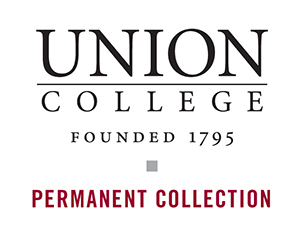Assyrian Tablet (clay brick)
Title
Assyrian Tablet (clay brick)
Date
858-824 BCE
Medium
clay
Height
6 1/2 in.
Width
14 in.
Depth
4 1/2 in.
Classification
Thematic Collection
Credit Line
The large Assyrian stone relief tablets (with which this tablet was possibly used as packing material) that are now in the collection of the Metropolitan Museum of Art (Accession Numbers 31.72.2 and 31.72.3) were a gift of Rev. W.F. Williams to Union College in 1854; prior to that, in the same year, H.C. Rawlinson gifted the tablets to Rev. Williams. Purchased from Union College by C.E. Wells for J.D. Rockefeller; acquired by the Metropolitan Museum of Art in 1931, gift of J.D. Rockefeller.
In 879 B.C., King Ashur-nasir-pal II celebrated the completion of his palace at Kalhu by hosting a banquet for 69,574 guests, but the glorious palace was soon abandoned and forgotten. In 1840, nearly three thousand years later, a young English diplomat named Austen Henry Layard noticed an unusually large mound while rafting down the Tigris River. He returned in 1845 to unearth the remains of the palace, sending his discoveries to the British Museum in London. He sent so many monumental sculptures and relief-decorated slabs that the museum left the remainder, which were eventually distributed through the efforts of Rev. W.F. Williams, to Union College in 1854. According to the article, "The mystery of the missing tablets," published in the Union College Magazine, July-August 1977, this brick and three other tablets may have been used as part of the packing material that the original large slabs from Rev. Williams, (later sold to Edward Wells in 1931, an art dealer for John D. Rockefeller, Jr., who then gifted them to the Metropolitan Museum of Art), were packed in on their journey from the Middle East. Union College kept the four tablets.
In 879 B.C., King Ashur-nasir-pal II celebrated the completion of his palace at Kalhu by hosting a banquet for 69,574 guests, but the glorious palace was soon abandoned and forgotten. In 1840, nearly three thousand years later, a young English diplomat named Austen Henry Layard noticed an unusually large mound while rafting down the Tigris River. He returned in 1845 to unearth the remains of the palace, sending his discoveries to the British Museum in London. He sent so many monumental sculptures and relief-decorated slabs that the museum left the remainder, which were eventually distributed through the efforts of Rev. W.F. Williams, to Union College in 1854. According to the article, "The mystery of the missing tablets," published in the Union College Magazine, July-August 1977, this brick and three other tablets may have been used as part of the packing material that the original large slabs from Rev. Williams, (later sold to Edward Wells in 1931, an art dealer for John D. Rockefeller, Jr., who then gifted them to the Metropolitan Museum of Art), were packed in on their journey from the Middle East. Union College kept the four tablets.
Object Number
2046
Alternative text
Clay brick tablet with cuneiform text; translation of cuneiform:
"Shalmaneser, the great king, the mighty king,
king of the entire world, king of Assyria, son of Ashur-nasir-pal, the great king,
the might king, king of the entire world, king of Assyria, son of Tukulti-Ninurta,
king of the entire world, king of Assyria: (this brick is from) the structure
of the ziggurat of the city of Calah."
"Shalmaneser, the great king, the mighty king,
king of the entire world, king of Assyria, son of Ashur-nasir-pal, the great king,
the might king, king of the entire world, king of Assyria, son of Tukulti-Ninurta,
king of the entire world, king of Assyria: (this brick is from) the structure
of the ziggurat of the city of Calah."

